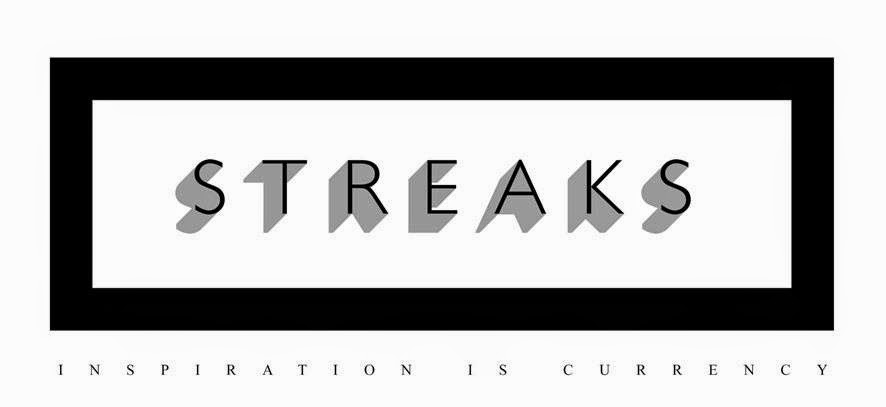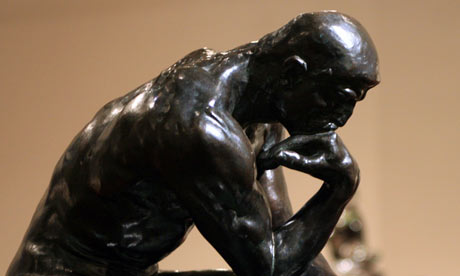Looking at one of Rodin's sculptures is the least passive experience you an have when walking through the V&A. It amazes me how people manage to sidle by without so much as a sideways glance.
Don't they know? Didn't any one tell them? This is a goddamn Rodin!
One in particular - The Fallen Angel, I find particularly compelling. Like poking a bruise. Or rather, punching yourself in the gut. But more of that to come.
Rodin changed the critical and public perception of sculpture. He is heralded as the father of modern sculpture. His pieces provoke an inherently primal response, why? Perhaps it is their extreme poses. Or their extremely natural ones, but perhaps it is best to consider the sculpting process first, as the process is primal in itself.
Morey, C. R. (1918). "The Art of Auguste Rodin". The Bulletin of the College Art Association of America
[As if my "to read" list wasn't long enough]
One in particular - The Fallen Angel, I find particularly compelling. Like poking a bruise. Or rather, punching yourself in the gut. But more of that to come.
Rodin changed the critical and public perception of sculpture. He is heralded as the father of modern sculpture. His pieces provoke an inherently primal response, why? Perhaps it is their extreme poses. Or their extremely natural ones, but perhaps it is best to consider the sculpting process first, as the process is primal in itself.
Indeed, the action of carving, structuring, forming an unformed material into not only logic but beauty and emotion is inherently physical. But as I try to explain the palpable physicality of Rodin's work, I am made maddeningly aware of my ignorance of his process, his method. Google is quick to give me quick answers.
"Instead of copying traditional academic postures, Rodin preferred his models to move naturally around his studio (despite their nakedness).[7]The sculptor often made quick sketches in clay that were later fine-tuned, cast in plaster, and forged into bronze or carved in marble. Rodin's focus was on the handling of clay.[48]" - From Wiki.Jianou, Ionel & Goldscheider, C. (1967). Rodin. Paris: Arted, Editions d'Art.
Morey, C. R. (1918). "The Art of Auguste Rodin". The Bulletin of the College Art Association of America
[As if my "to read" list wasn't long enough]
From observation of life to the final forgery and carving, the process is one of physical creation - life is given from the tips of his fingers to the balls of his hands.
The act of creation is, in it's essence, a visceral act.
And so, from the viewer's perspective, this transforms into a visceral experience, that is to experience something in our guts, in our insides. It is an experience of crude, primitive emotion. A visceral reaction is intrinsically un-intellectual. It opposes the outcomes of the great classical sculptures. They are steeped in mythology, allegory and symbolism. They are the product of an obsession with an arguably academic notion of beauty.
Rodin has no desire to hide behind allegory. He gives us despair. And flesh. And weeping.
He gives us the body in it's most contorted horrors and it's unadultered platitudes.
And it is here that the form, the medium within which he creates is so fundamental. Sculpture: the medium that allows for radical and absolutely consumption by it's audience. Indeed, from it's conception, through Rodin's method of clay sketches, to it's final state in bronze or marble, it exists in three tangible dimensions. It is beyond the illusory shadows of cinema, the gloss of the photograph, the canvas-bound representations of painting, and the printed cage of words, these forms are by their nature, surface.
In sculpture Rodin stands before you - humanity is here. Pain and torment, passion and lust. Thought itself stands solid and substantial before us.
I wanted to talk specifically about The Fallen Angel (which is on display at the V&A, so get to it!).
As we move around the pedestal on which these two figures contort in their suffering, we are God-like. In our position as observer we become a character in the scenario cast in bronze. We are part of the power play, the status struggle.
The tension in the calves of the angel, the arching of her feet, how her back curves and how she is held tight in the anguished embrace of her companion.
The bronze cast muscles captivate.
Their pain will endure. Captured. Forged. Displayed.
And as we watch, it is our pain, and our helplessness and it endures with them.
The Cry, first modelled circa 1886, this cast dates 1964 and can be seen at LACMA in Los Angeles.
M. Auguste Rodin, circa 1911
Head of Pierre de Wissant
The Eternal Idol, 1889
The Thinker, circa 1904
The Fallen Angel, 1895, Bronze.
Rodin circa 1862, by Charles Hippolyte Aubry
Any one else into Rodin? Or modern sculpture? Seen those Kelpies up north? Mad keen for that!!
Thanks for stopping by :) Check out my piece on Jordan Eagles' Blood Work if you like your art gritty!
Kate x








